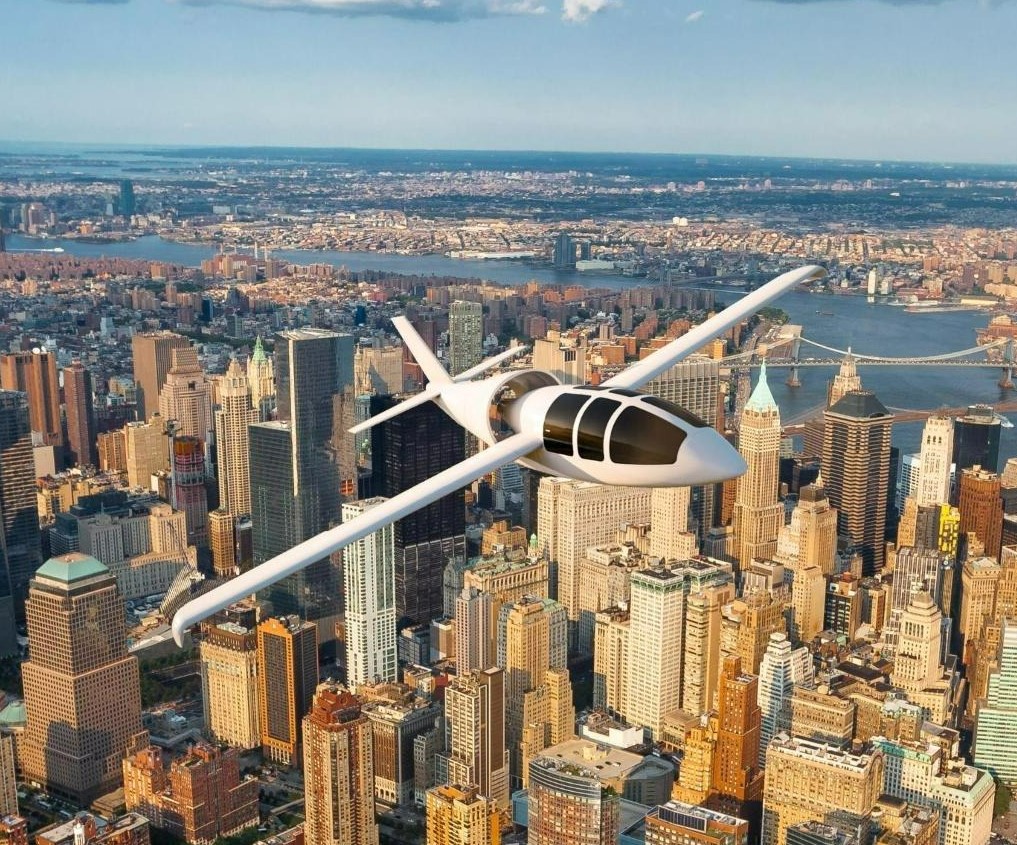
Cormorant
CORMORANT
Transportation: The Times They Are a-Changin’

Transportation of people and goods is a highly valued aspect of our societies and economies that we should use wisely, but not give up on improving; systems and solutions can and must change to meet climate change mitigation obligations.
Not only should transport solutions be climate neutral when used but also, they should equally importantly require minimal physical infrastructure on which to operate.
At Cormorant, we have developed a minimal impact aviation transportation solution not just in terms of zero-CO2 emissions, but through better use of sustainable materials, and reduced demands on infrastructure. Its aim is to provide a valuable contribution to the mix of green transport solutions that the world needs to prosper in better harmony with the environment. Beyond this we see Cormorant both benefiting those who use it and providing a social dividend as part of its production process – more of this in future postings.
Here, we briefly review:
- Land- vs aerial-operating transportation – infrastructure requirements
- Efforts underway to ‘green’ aviation’s energy usage
- Better utilization of transport assets – ownership vs usage
Change is required not only in the source of power used but also in the demands placed on infrastructure and environmental assets. This requires a shift from over reliance on unsustainable land-based transportation solutions to a mix of aerial alternatives, some of them currently seen as novel. Change will also be required to better use individual transportation assets (or “cars” as we currently refer to them) – transport as a service, rather than as an asset to be owned and not used for up to 96% of the time, will better use vehicles be they land-based or aerial.
To reduce CO2 emissions to zero, how we power ourselves from A to B needs to change. Also, to reduce pressure on infrastructure requirements, in what we power ourselves from A to B also needs to change. With lower operating costs enabling economic point to point transportation, smaller electric aircraft will offer solutions, some of them currently seen as novel, in the short- to medium-term. Larger electric or hybrid-electric aircraft are also progressing, though their development pipeline is longer.
A paradigm shift in transportation could well be on the not-too-distant horizon; for the sake of the planet, it may well have to be.
Physical infrastructure is environmentally costly
Don’t it always seem to go
That you don’t know what you got
’til it’s gone
They paved paradise
and put up a parking lotBig Yellow Taxi, Joni Mitchell 1970
Increasingly, from an impact perspective, it is apparent that how we transport ourselves and goods is as important as what zero CO2-emission power sources we use in those transportation solutions.
The need to move away from land-based, resource intensive transport systems is readily apparent. Relatively small-scale initiatives are already underway to reclaim urban landscapes from the domination of road vehicles and the infrastructure that they require (e.g. as in Utrecht, the Netherlands). Such initiatives are likely to gather pace as the requirement to meet CO2 reduction and sustainability targets increases. It is not however sufficient to relocate or reroute land-based, unsustainable networks; viable replacement solutions are required – as are alternatives for proposed new build additions to these land-based networks.
A less infrastructure-intensive transport solution is already here
Well you roll on roads over fresh green grass
For your lorry loads pumping petrol gas
And you make them long, and you make them tough
But they just go on and on, and it seems that you can’t get offWhere do the children play? Yusuf Islam (Cat Stevens) 1970
In terms of the physical infrastructure requirements for air transport, these self-evidently are only required at the points of departure and arrival. Increasing use of air transport does not of itself require a larger, land- and resource-consuming network on which to travel. From this perspective, air transport is the most sustainable solution.
The principal issue is the power sources that are used to propel aircraft. To date, from a CO2 emissions point of view, the principal environmental negative for aircraft operation is a reliance on energy-dense, fossil fuels to provide the range and quick turn-round times to efficiently operate high capital value assets.
Change is underway:
- For smaller aircraft
- Short distances are already practical using existing Li-Ion battery technology. Other battery technologies are under development, offering substantial increases to the energy density of the power source – a critical requirement in aviation applications.
- A considerable number of electrically powered vertical take-off & landing electric (eVTOL) aircraft are at various stages of development. These particularly seek to revolutionize urban transport and offer much promise in doing so but face the short- to medium-term obstacle of challenges of technological novelties and related regulatory involvement and approvals in reaching their target markets.
- In addition to personal transport, goods delivery drones are under development for the autonomous delivery of packages.
- Hydrogen, either as a direct fuel source or in fuel cell applications, is actively being considered for larger aircraft. Large scale production of green hydrogen by splitting water from renewable electricity, and a network for its supply needs to be achieved. Significant initiatives are underway to make this a reality, for example at airports serving Paris, France.
- SAF (sustainable aviation fuel) is currently touted as the best short-term solution for larger, including long-haul. aircraft. According to BP Oil, processing of cooking oils and specific household and forestry waste results in sustainable aviation fuel, which is then blended with ‘traditional’ fuel to yield a mix for use in aircraft. SAF is thus used to dilute the overall net CO2 emissions caused by the direct burning of ‘traditional’ fuel by “up to” 80%. SAF is at best therefore only a partial, stop-gap solution.
As discussed elsewhere, standards under development jointly by industry and regulators remain impediments to rapid adoption of new power sources, particular in novel applications such as eVTOL. Certification approval requirements, with their justifiable primary focus on safety, have evolved for power-sources that use aviation fossil-fuels in traditional aircraft designs (i.e., based on established fixed-wing or rotorcraft configurations using ‘conventional’ piston, turbine, or jet engines). Novel applications, combining new power supply systems together with disruptive designs, complicate and slow down the regulatory requirements and approval process – even more so when several different innovations are presented simultaneously in one solution.
Use versus ownership
To date, consumers have sought the right to access their own personal transport at any time. This results in the transport asset, for example, car, motorbike or even bicycle, being substantially unused with its owner either having purchased the asset outright or exclusively operating it under a form of lease agreement. In the UK, data shows that light road vehicles (cars and vans) are actually used for only 4% of the time available – similarly low usage is likely elsewhere. This is a highly inefficient use of resources, both financial and physical.
New generations of consumers, generally in urban locations, are becoming convinced to be early adopters of paying for use of personal transport rather than requiring having the right to constantly access their own means of transport, which can then be parked, unused for 23 hours per day. Short term, single journey bicycle and car sharing rental are proving popular in larger cities. Combined with traditional and app-driven taxi services, it is self-evident that personal transport needs to move toward a pay-for-use model to improve asset utility. Beyond this, increased use of public transport that is comfortable, convenient, and cost-effective, combined with better ways of working, will help alleviate congestion on transport systems.
If operating the means of transport or being transported in it as a passenger, we do not require to own our principal means of personal transport. Personal transport assets will be better utilized when we view them as providing a service to be paid for and consumed on demand, rather than remaining unused and gradually depreciating for most of their lifetimes. Such an approach to aerial transport will be required for all but the wealthiest of individuals – transportation as a service is also a desirable, more efficient model for land-based personal transportation usage.
Is there a paradigm shift on the horizon?
Come senators, congressmen
Please heed the call
Don’t stand in the doorway
Don’t block up the hallThe Times They Are a-Changin’ , Bob Dylan 1963
The online Cambridge dictionary defines a paradigm shift as, “a time when the usual and accepted way of doing or thinking about something changes completely”. Whether we are at, or are approaching, a paradigm shift in transportation depends on several factors coalescing, along with the political and social will to effect such change:
- Energy: Substitution of fossil-fueled transport solutions with zero-CO2 This is substantially achieved, or being achieved, for land-based transport (for rail and road respectively). For aviation, where energy density requirements are more critical, large R&D initiatives are underway as are developments for fueling / recharging infrastructure.
- Infrastructure: Substitution of planned resource-intensive land-based transport solutions with aerial alternatives that require infrastructure only at departure and arrival points. Land and/or waterbodies in the urban, rural, and wilderness contexts, should not be readily sacrificed to provide a surface on which transportation systems operate between departure and arrival points. This is perhaps the most radical change required of travelers, the extent to which it is accepted depends on changing mindsets, legislative / taxation initiatives, and the attractiveness of alternatives offered (from urban eVTOL, via mass transit, to off-grid solutions serving remoter communities).
- Users: To defray asset costs and to better use less of those assets in a more intensive way, users, particularly for personal transport solutions, should accept a substantial shift from outright ownership to a paid for, transportation-as-a-service model.
- Innovators of aerial transportation solutions working better together and with regulatory authorities to develop common standards for ‘novel’ use in aviation applications. This will both ensure a high level of safety and foster a collaborative approach between those regulated and the regulators. Applications deemed ‘novel’, such as powering an aircraft electrically, need to become mainstream safely as soon as practicable.
- Commitment from you, the reader of this post. Much depends on individuals’ willingness to embrace changes for the greater good. These may require adjustments to behaviors, altering asset ownership expectations, and / or developing and maintaining a commitment to sustainable life choices when they become available – on this last point dangers are presented through climate change fatigue, whereby consumers become weary of environmental messaging and actions required, or worse still, their succumbing to denialists’ false narratives encouraging cynicism toward the veracity of anthropomorphic climate change.
Share this: